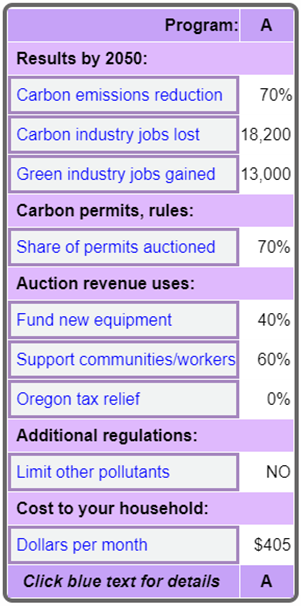Public preferences for a state-level carbon cap-and-trade program

Abstract
We use survey-based choice experiments to assess individual demand for a state-level carbon cap-and-trade program with different attributes. We estimate implied social marginal benefits of carbon emissions reductions (SBC)—a willingness-to-pay measure that complements existing avoided-cost measures captured by the social cost of carbon (SCC). Household willingness to bear the cost of any given program depends on the emissions reduction the program would provide, as well as the likely changes in the number of jobs in carbon-intensive industries and in ‘green’ industries in the respondent’s county. We estimate marginal rates of substitution between ‘carbon’ jobs and ‘green’ jobs. The share of permits auctioned, and the share of any auction revenue spent new technology has a less-discernible effect on program preferences, but people do care how much of any auction revenue is used to help workers and communities adapt to the program. People also prefer programs that include additional regulations to limit co-pollutant emissions by firms that buy permits. We account for systematic sample selection in our estimating sample, relative to the quota-driven sample of invitees from our internet panel. We also re-estimate our model using only systematic jurisdiction-level heterogeneity in preferences, as identified via LASSO methods, and use this model in a benefits-function transfer to predict willingness to pay for specific programs across all jurisdictions in the lower-48 U.S. states. (This paper featured as one chapter in Garrett Stanford’s 2023 Ph.D. dissertation at the University of Oregon.)